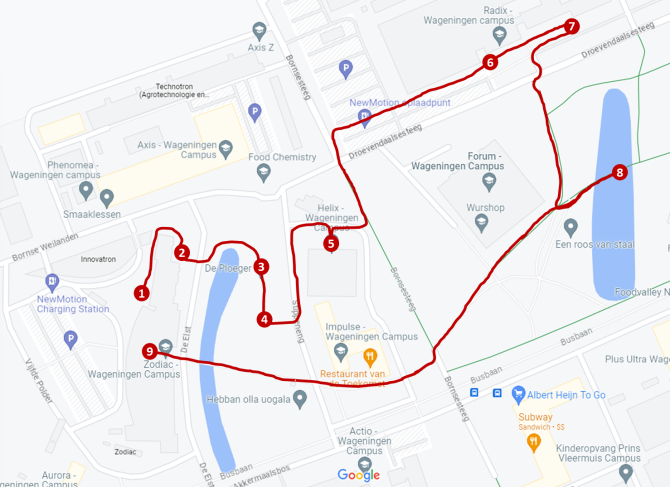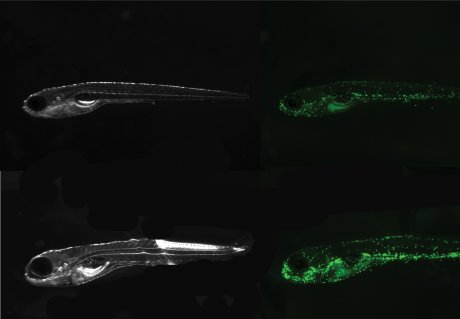Where is all the animal-inspired art on campus?
WIAS Magazine - Spring edition 2023
Lifestyle
A few board members of WIAS Magazine decided to go for a relaxing Spring walk to enjoy the warmer weather and take a closer look at most of the animal-inspired art we have here on campus. It took us around an hour to complete the circuit and during the walk we reflected on the art pieces, asking ourselves: What emotional impact the artworks have, how the animal feels and how does it make us feel, what materials were used to make the art and what human-animal relations does the art on campus reflect? Some of the animals themselves even showed some interest in the WIAS Magazine!
1 – Sow and her piglets
This statue has as plaque ‘bron van welvaart’, roughly translated as ‘source of wealth’. It made us wonder about wealth for whom and we assumed it was wealth for humans. In that case this statue fits a neoliberal framing of animals as products that can be used by humans for their benefit. Nevertheless, the many piglets look very happy, surrounded by their brothers and sisters and of course their mom. The mom itself may feel a little bit overwhelmed by all the busy piglets. It is sculped in bronze and stands atop a concrete block. We think bronze is a suitable material for depicting the detailed characteristics of this animal and her offspring, it realizes this animal very effectively. We greatly rely on the meat of this animal, yet never come into direct contact with them, so we think this art piece effectively celebrates the animal and brings one a lot closer to them.
2 – Man with bull
This statue is sculpted in pebble concrete and weighs 23 tons! We think this durable material is perfect for depicting our relationship with cows, where without them (especially historically) humans would not have progressed and endured as much as we have. This statue depicts a bull that is led by a human. To us it shows the interdependency between the bull and the human. Both seemed still in the position where they were. It made us think how we can be stuck in a certain way when looking at the role of animals in food systems. Alternatively, the relationship between the man and the bull could come across as very stiff and professional. We got the feeling the bull could easily overpower the man but is holding back. Take a look for yourself!
3 – The ploughman
This statue depicts hard work. Usually, animals are in front of the plough, but now it’s men. The man in question looks proud to be there and to do his job: his chest is forward, and his chin is up: he’s as strong as an ox. This sculpture is carved from limestone, also a hard material which emphasises the hard work the man is doing. It makes us think how animals and humans used to (and still in many places) do the hard work in agriculture, but how this is quickly being replaced by machines. Despite no animal depicted the statue, it forced us think about the role of animals in farming as providers of draught power. The artist highlighted the technology that now plays a role in farming. The human having replaced the draught animal with technology.
4 - Nine gates to heaven
This statue looks mystical, with lots of different structures that you can keep looking at, seeing new things each time. Just like with our research! This art piece is made of steel which is in stark contrast to the soft almost ethereal feel of the sculpture. The depiction of the root of a lotus plant, the cells and black holes, makes us think how humans share many things with plants and animals. This is a really beautiful piece to visit!
5 – DNA staircase (Helix building)
The DNA double helix staircase is made from steel, appropriately representing the foundation and strength upon which life is based. It was difficult to get to the staircase which made us reflect on the difficulty scientists have in making sense of all this genetic data we can easily synthesis but not easily interpret. The DNA staircase again made us think about what we have in common with animals although it can be difficult to think of an animal when looking at this level.
6 – Reclining figure (Gleaner)
The reclining figure inspects a leaf as if he's managing or controlling disease.
Work on more-than-human relationships recognises that the framing of animals as
pests affects how acceptable certain management practices are. This figure
shows great care for the plant, but at the potential cost of insects. The
sculpture is carved from travertine stone which, despite being a hard material,
has a very soft look and feel to it which emphasises the soft nature in which
the person is inspecting the plant for disease. For us, this statue depicts the
inquisitive nature of scientists. The man looking at the plant seems very
relaxed, and curious about the plant he just discovered. If only we PhDs were
as relaxed doing our research!
7 - Life reborn
In this statue, we saw lots of different animals like birds, fish and insects. It feels like a hug shared between parents above their nest, a whale’s tail breaching the water or a spider spinning its web. This sculpture is made from bronze, a material that lends itself well to create a flow and movement just like the theme of change the artist wanted to depict. We really liked this sculpture; go have a look for yourself to see what you see!
8 - Must leave
Must leave, but then to remain in a perpetual state of not leaving. It almost feels as if the water beetle needs to leave an ecosystem as it will otherwise kill it, but there is no escape. Could this be a system that humans have put under so much pressure that it no longer supports a water beetle? This sculpture is made from mixed materials, which we thought was very fitting for an artwork which is celebrates the diversity of our campus. The beetle looks like it is just taking off, looking for a better pond. Maybe it’s big enough for one of us to climb on and go on adventure with it? Yay!

We highly recommend this route if you need a break from your lab bench or computer screen, go and take a closer look at some of the animal-inspired art on campus! If you start from the Radix building you can start from 6 – Reclining figure and finish at 5 – Double helix, for a complete circular route. If you are interested in a comprehensive guide to all the art featured on campus WUR also provides an interactive pamphlet here.


